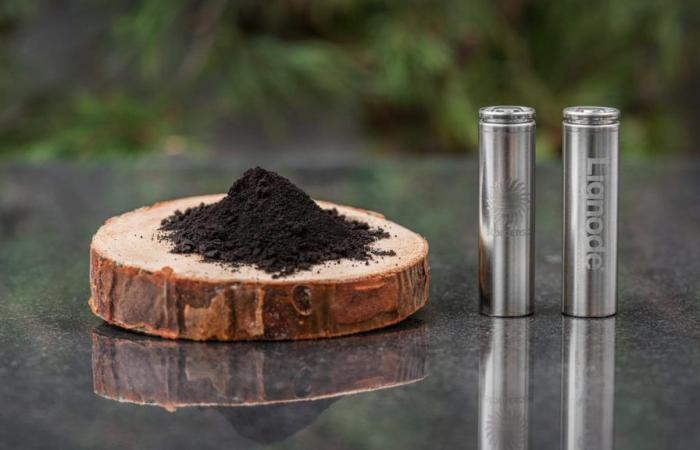
Since their first appearance in scientific studies in 1986, rechargeable lithium-ion batteries have become the most widespread solution to power all types of devices, from the cell phones that we use daily in Spain to the electric cars that are increasingly common on our roads. Their high energy density and greater performance and energy efficiency have made them the first option for all types of applications, but in recent years alternatives are emerging thanks to research, such as a material that can accumulate energy directly in the casing of the devices.
Due to the serious environmental consequences of lithium extraction, other alternatives are also being explored, such as those offered by companies such as the Finnish Stora Enso and the Swedish Altris. These two Scandinavian companies have just announced an agreement to develop sodium ion batteries with a hard carbon anode called Lignode, a greener solution than traditional lithium-ion batteries and graphite anodes. Beyond using materials that are less harmful to the environment, this proposal offers better loading speeds, longer life, more flexible working temperatures and greater safety.
“At Altris we strive to establish a local supply chain and leverage abundant, clean materials to develop sodium-ion batteries,” said Björn Mårlid, CEO of Altris, in a press release. “It is exciting to team up with Stora Enso and participate in their establishment of a tree-to-anode supply chain based in Europe. “We look forward to the partnership evolving over the coming years, with the goal of bringing to market the world’s most sustainable battery.”
wooden anodes
There are other sodium batteries in addition to those offered by Altris, such as those from the American Natron Energy, but what is unique is Stora Enso’s system to obtain an anode from wood. Its base is lignin, a binder that It gives wood its rigidity and resistance to rot and accounts for between 20 and 30% of trees..
Lignin is obtained as a by-product of the manufacture of cellulose fiber, widely used in the textile industry, and its destination in many cases ends up being fire, since it is burned to obtain energy. In this case, Stora Enso, which has been developing and producing solutions based on wood and biomass for eight decades, takes advantage of it to convert it into hard carbon to replace graphitethe mineral commonly used for the anodes of lithium-ion batteries.
Lignode, the anode made from wood by Stora Enso
The Finnish company had already reached agreements with the battery manufacturer Northvolt and the electric vehicle brand Polestar, but its alliance with Altris goes one step further towards maximum sustainability. “Bio-based materials are key to improving the sustainability of battery cells. Given that Lignode has the potential to become the most sustainable anode material in the world“This partnership with Altris fits perfectly with our common commitment to support the ambition of more sustainable electrification,” says Juuso Konttinen, vice president and chief growth officer of biomaterials at the company.
In addition to obtaining batteries with faster charge and discharge speeds (without specifying the variation with respect to conventional ones), the initiative will also allow reduce the huge dependence on Chinese importssince the Asian country is the origin of more than 90% of the graphite imported by the European Union.
sodium ion batteries
Unlike lithium ion batteries, sodium ones are made from salt, wood, iron and air, abundant, sustainable and easy to recycle elements without leaving European borders. They do not need minerals that are difficult to extract or toxic elements such as lithium, cobalt or nickel.
Altris has developed its own solution based on Prussian white, “a material with a stable structure with large pores, which makes it very suitable for the capture and storage of sodium ions,” according to their website. This element is what acts as a positive electrode in Altris sodium ion batteries and is obtained thanks to a patented low temperature and pressure synthesis method to “offer a competitive and sustainable alternative without sacrificing performance.”
The carbon in Lignode comes from cellulose fiber
Stora Enso
Omicrono
The other fundamental part of Altris batteries is the electrolyte, made from sodium bis(oxalate)borate (NaBOB), which by its nature It is not only fire resistant, but retardant. This offers an important competitive advantage, and makes its product “the safest battery on the market”, according to the Swedish brand.
To this we must add other advantages, such as an energy density comparable to those known as LFP (lithium ferrophosphate) batteries, the most common in electric cars. In fact, one of Altris’ most recent announcements is a commercial size battery with a density of 160 Wh/kg, although the company’s goal is set at 200 Wh/kg in the coming years. For comparison, the current Chinese CATL batteries for the Tesla Model 3 have an energy density of 255 Wh/kg, so there is still room for improvement for this technology.





